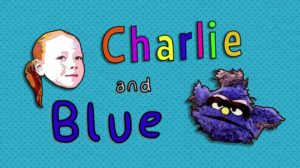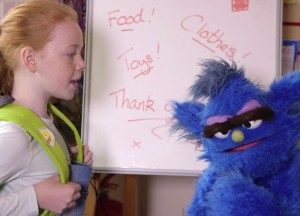Key words and concepts
Lord’s prayer: A prayer Jesus taught to his disciples when they asked him how to pray. A central prayer in many Christian denominations.
Taizé: An ecumenical Christian community with a strong devotion to peace and justice through prayer and meditation.
Icon: Painting or mosaic of Jesus Christ, the Virgin Mary, a saint, or a Church feast. Used as an aid to devotion, usually in the Orthodox tradition.
Ecumenical: Movement within the Church towards co-operation and eventual unity.
Prayer: A request for help or an expression of thanks usually addressed to God. For many people it is a way of communicating with God about anything at anytime and anywhere. Prayers can be said alone or with a faith community, at home or as part of a religious service.
Forgiveness: The act of letting go of anger and resentment against someone who has offended or hurt you in some way. In many religions, forgiveness is about showing mercy and compassion towards the person who has offended or hurt you regardless of whether they are truly sorry.
Giving thanks: In this context; saying thank you to God for the world, people and events that happen in life.
Learning activities
The lesson resource is a sung prayer; ‘Oh Lord Hear my Prayer’, originating from the Taizé community, a monastic, peace-building Christian community in France. Taizé particularly supports young people.
You will need the lyrics to the prayer. There are many videos on YouTube featuring both images and lyrics as the prayer is sung. If you find a video you like that has no lyrics, search the internet for lyrics separately and hand them out or read them to children.
Stage 1: O Lord Hear My Prayer:
Create a calm and quiet environment before listening to the song. Some ideas:
- Have the music playing before the children enter the room. Explain that they are going to listen to some very special music and they have to be quiet
- Sit the children in a circle and light a candle (adhering to the schools health and safety requirements). Ask children to close their eyes and listen to the music.
When the music has ended ask them to think of one question they want to ask. Children share their questions and they are written down (organise into Who, What, Where, Why). [It is important not to answer the questions at this point].
(10mins) Invite the children to select an activity to do while they think about the questions. Choose activities that allow children to reflect. Avoid ‘small world’ items for example, which children will be tempted to simply play with. [Have the instrumental version playing while the children are active]:
- Colouring patterns rather than pictures;
- Modelling clay, e.g., Play-Doh;
- Selection of books and cushions (reading area);
- Threading activities;
- Painting;
- Collage and making materials.
Bring the children back together and think about the questions as a group. [They may have made something relating to the music]
Stage 2: O Lord Hear My Prayer
Listen to ‘O Lord Hear My Prayer’ again and remind the children of the previous discussion.
Ask the children the following questions if they haven’t already been covered:
- Why do you think they are singing this?
- How does it make you feel?
- Why do you think they say the same words over and over again?
- Can you think about what the people are doing as they sing this? Are they standing, sitting? etc…
- Where do you think they are?
- Do you think anyone can sing this?
Show the children some Taizé photographs. There are many online, both on Taizé’s website and Google images. Explain that Taizé is an ecumenical Christian community in France (ecumenical means that people come from all sorts of Christian denominations, the aim is to be together rather than pursue one way of being Christian). The music is an example of prayers used during meetings. In the Taizé community, short songs repeated over and over create a meditative atmosphere and it is believed that this allows people to find and listen to God in prayer. It is also a way of joining everyone together in prayer. Meetings usually take place in a church or other welcoming space. Let the children know that some Christians like to pray or meditate in this way. There are often icons, candles, a cross, an open Bible, flowers in the church or prayer space. People can usually choose whether to sit on the floor, a bench or chair, stand or kneel during prayer.
Ask the children to suggest ways of making a quiet space in the classroom for them to go and think, reflect, pray:
- What would they put there?
- What would it look like?
- When could they use it?
- What would they use it for?
Stage 3: Prayer
Show images you have found online of Christians praying- in different places, different types of people, different types of prayer.
Explain that this lesson is about Christian prayer but many people who belong to many religions around the world also pray. Many Christians believe that you can pray anywhere and at any time. There are lots of different ways to pray too.
Show the words of the Lord’s Prayer- a very important prayer in Christianity.
Explain that when some people pray to God the prayers say: “I’m sorry” or “I love you” or “Thank you” or “Please help me”. Ask the children who they say these things to? [This may be related to family, friends and /or religion.]
Ask the children to imagine they could speak to that person now, what would they say? [Relate to the four areas above “I’m sorry” etc. Children can write/draw in a large speech bubble.]
Stage 4: Reflecting
Explain that people also pray for others around the world and show the children a selection of photos to illustrate different things people may pray for, e.g.:
- people who are ill;
- people who may not have enough to eat or drink;
- countries involved in war.
Ask the children to say why they think people pray for these people.
Set up an area where children can look at the photos, take a pebble and drop it into an imaginary river (blue material etc) with their thought, wish or prayer for these people.
Stage 5: Prayer and music
Introduce children to some more examples of music being used in prayer. Music is also used to prepare people for worship and can range from chants to rock Some examples:
- Happy Day by Ladysmith Black Mambazo
- Traditional Christmas singing at Kings College Chapel, Cambridge
- The Muslim call to prayer, or adhan
- Christian rock or pop, for example from a Hillsong concert
- Sikh singing in the Temple these songs are called ragaas and are part of worship
Stage 6: Exploring…introducing prayer in Judaism and Islam
Explain that when people pray they sometimes use things to help them. Show some images of icons in Eastern Orthodox Christianity, such as of saints, Mary and Jesus, and Jesus and his disciples. Some of these icons will be painted on the walls and ceiling of Orthodox churches.
Ask the children sit in a circle and pass a tambourine around: but to do it so that it doesn’t make a noise! Talk to them about taking care of important objects and that they are going to pass some special objects to each other that are used in prayer.
Show the children a Jewish Tallit (prayer shawl). This is used by Jewish people in prayer (usually only men). It cloaks the person like God’s love cloaks us in life.
Now pass the artefacts around carefully [This can be done in small groups], e.g., the tallit, Hajj robe, an Islamic prayer mat, cushion (hassock), prayer beads (selection), rosary, icons, cross, prayer hats from Muslim and Jewish traditions.
Ask children how they think these things are used in prayer. Can they say which things appear to be similar for different religious people?
What questions do they want to ask about these objects?
Use stories to put prayer in context, e.g., ‘Goodnight Sh’ma’ by Jacqueline Jules or ‘I am a Muslim’ by AGGARWAL and M.
Ask the children to say what helps / would help them to sit and think? (or pray if appropriate).

